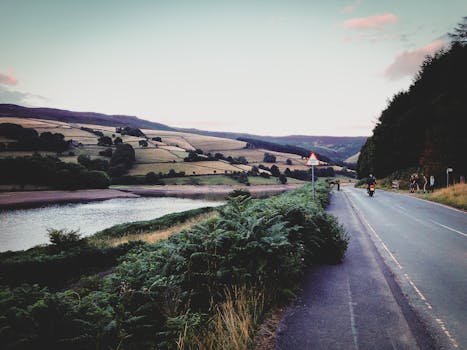
Why It’s Important to Take Driving Lessons in Different Conditions
Learning to drive isn’t just about passing the test—it’s about preparing for real-world conditions that you’ll encounter throughout your driving life. In the UK, road and weather can vary dramatically, presenting challenges every learner must be equipped to handle.
At RoadSmart Driver Coaching & Development, we believe it’s essential to practice in diverse scenarios—from moonlit country roads to busy motorways, slick winter surfaces to icy rural bends.
Here’s why taking lessons in different conditions not only builds your confidence but could potentially save your life:
Driving in the Dark (Night-Time Conditions)
Young drivers face significantly elevated crash risks during night. For example, male drivers aged 17–20 are:
7 times more likely to be involved in a serious or fatal crash compared to all male drivers,
And between 2 AM to 5 AM, that risk jumps to a staggering 17 times higher.
RoSPA
Night driving demands sharp hazard perception, careful speed management, and heightened awareness—skills best honed under actual night-time conditions.
Motorway Lessons
Though motorways aren’t part of the test, they remain a common driving environment after passing. Practising motorway manoeuvres through qualified lessons helps you:
Learn safe merging, lane discipline, and overtaking,
Build comfort driving at higher speeds,
Prepare for long-distance journeys with greater responsibility.
- Prepare for long distance driving and managing passengers and fatigue,
- Learn how to use motorway services.
Lessons in Snow, Ice & Winter Weather
Winter brings distinctive challenges:
You’ll learn to pull away smoothly, avoid skidding, and manage greater stopping distances.
Use of lights, demisters, and windscreen wipers becomes crucial in rain, sleet, or fog.
These lessons help you stay in control during poor visibility and slippery roads.
Driving on Rural Roads: A Critical Learning Need
Rural roads pose a distinctly high risk to young drivers—here’s why it’s vital to include them in your lesson plan:
71% of fatal crashes involving young drivers (ages 17–24) occur on rural roads. That’s almost three-quarters of all such tragedies and underscores their added danger.
The AARoad Safety GBYoung drivers are over-represented in rural crashes by 9%, compared to all roads. That over-representation is highest at age 17, at 27%, decreasing with age.
The AAroadsafetyknowledgecentre.org.ukThe risks on rural roads aren’t theoretical:
Single-vehicle collisions account for 27% of rural crashes involving young drivers, compared to just 15% for all ages.
The AARoad Safety GBCrashes occur disproportionately on Sundays, often due to substance impairment—9% of young-driver rural crashes happen on Sundays vs. 4% on other days.
The AARoad Safety GB
Also, rural driving conditions—narrow lanes, blind bends, limited lighting, and unexpected hazards like wildlife—make it one of the most challenging settings for inexperienced drivers.
The AAParliament Publications
Why Diverse Lessons Translate to Safer Driving
Passing the test confirms you can drive in controlled conditions—but the real world is rarely so predictable. Practising across various scenarios helps you:
Build real-world confidence and quick thinking,
Refine hazard perception in reduced visibility or weather-affected conditions,
Learn to adapt speed and judgement based on road type,
Understand how even slight speed or distraction can be dangerous—especially on rural roads.
Final Thoughts
Driving lessons aren’t just a ticket to independence—they should set the foundation for a lifetime of safe driving. By including night sessions, motorway confidence-building, slippery-surface practice, and critical rural-road experience, you’ll be better prepared for whatever the UK roads throw at you.
🚘 Ready to become a safer, more versatile driver? Book your lessons with RoadSmart Driver Coaching & Development today—and let’s prepare you for not just the test, but the road ahead in all its forms.


